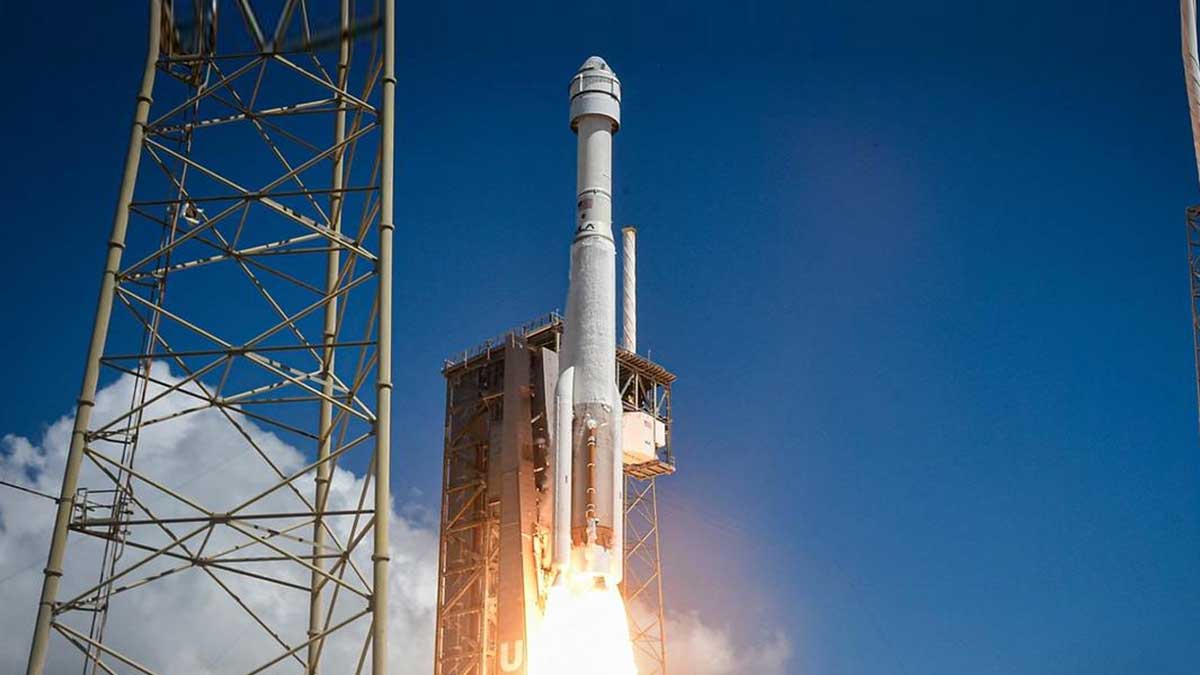- Home
- Billionaires
- Investing Newsletters
- 193CC 1000
- Article Layout 2
- Article Layout 3
- Article Layout 4
- Article Layout 5
- Article Layout 6
- Article Layout 7
- Article Layout 8
- Article Layout 9
- Article Layout 10
- Article Layout 11
- Article Layout 12
- Article Layout 13
- Article Layout 14
- Article Sidebar
- Post Format
- pages
- Archive Layouts
- Post Gallery
- Post Video Background
- Post Review
- Sponsored Post
- Leadership
- Business
- Money
- Small Business
- Innovation
- Shop
Recent Posts
Boeing’s Starliner capsule docks at ISS despite helium leak

Boeing’s Starliner capsule, carrying two astronauts, successfully docked at the International Space Station (ISS) on Thursday, overcoming challenges after NASA and the aerospace firm detected helium leaks during its flight. The docking, a significant milestone following years of technical delays, occurred at approximately 1:34 p.m. EDT, about 26 hours after the spacecraft’s launch from Cape Canaveral Space Force Station in Florida.
Despite the helium leaks affecting some of the spacecraft’s thrusters, Starliner’s docking was confirmed by Boeing. Astronauts Butch Wilmore and Suni Williams are safe onboard, with backup thrusters available if needed. Their mission includes testing the spacecraft’s hatch operations and analyzing its configuration with the ISS, according to NASA.
The two astronauts will spend eight days aboard the ISS with four American astronauts and three Russian cosmonauts before returning to Earth. Boeing streamed Starliner’s docking process, showcasing the spacecraft’s journey to the ISS.
Boeing’s journey to this successful docking was fraught with delays and technical challenges. The company previously docked an unmanned Starliner capsule at the ISS in 2022, following issues with oxidizer valves in its propulsion system. In 2019, a software glitch caused a Starliner capsule to become briefly stranded in orbit.
Boeing’s first attempt to launch a crewed Starliner capsule in February 2023 was delayed until April, then pushed back to May due to technical issues. However, that launch was ultimately halted two hours before liftoff.
SpaceX, a competitor in the aerospace industry, also achieved a significant milestone on the same day, launching its Starship rocket—the largest in the world. This marked SpaceX’s first successful reentry into Earth’s atmosphere with the spacecraft. The rocket landed in the Indian Ocean, with its Super Heavy boosters landing in the Gulf of Mexico just eight minutes after launch. SpaceX had previously experienced setbacks, including two failed launches that resulted in explosions shortly after liftoff and a third launch that was lost on reentry.
Recent Posts
Categories
- 193cc Digital Assets2
- 5G1
- Aerospace & Defense46
- AI37
- Arts3
- Banking & Insurance11
- Big Data3
- Billionaires446
- Boats & Planes1
- Business328
- Careers13
- Cars & Bikes76
- CEO Network1
- CFO Network17
- CHRO Network1
- CIO Network1
- Cloud10
- CMO Network18
- Commercial Real Estate7
- Consultant1
- Consumer Tech180
- CxO1
- Cybersecurity68
- Dining1
- Diversity, Equity & Inclusion4
- Education7
- Energy8
- Enterprise Tech29
- Events11
- Fintech1
- Food & Drink2
- Franchises1
- Freelance1
- Future Of Work2
- Games141
- GIG1
- Healthcare78
- Hollywood & Entertainment186
- Houses1
- Innovation42
- Investing2
- Investing Newsletters4
- Leadership65
- Lifestyle11
- Manufacturing1
- Markets20
- Media193
- Mobile phone1
- Money13
- Personal Finance2
- Policy567
- Real Estate1
- Research6
- Retail1
- Retirement1
- Small Business1
- SportsMoney33
- Style & Beauty1
- Success Income1
- Taxes2
- Travel10
- Uncategorized8
- Vices1
- Watches & Jewelry2
- world's billionaires415
Related Articles
Universe Expanding Faster Than Expected, New Data Shows
Recent findings from the James Webb Space Telescope (JWST) have confirmed something...
By 193cc Agency CouncilDecember 10, 2024Russian Soldier Life Expectancy: One Month Amid Losses
In the ongoing war between Russia and Ukraine, a stark reality faces...
By 193cc Agency CouncilNovember 29, 2024Trump Joins Elon Musk for SpaceX Starship Test Flight
President-elect Donald Trump is expected to attend the latest launch of SpaceX’s...
By 193cc Agency CouncilNovember 19, 2024SpaceX Launches Dragon to Rescue Stranded Astronauts
SpaceX’s Dragon spacecraft launched successfully from Cape Canaveral, Florida, on Saturday afternoon,...
By 193cc Agency CouncilSeptember 28, 2024















Leave a comment